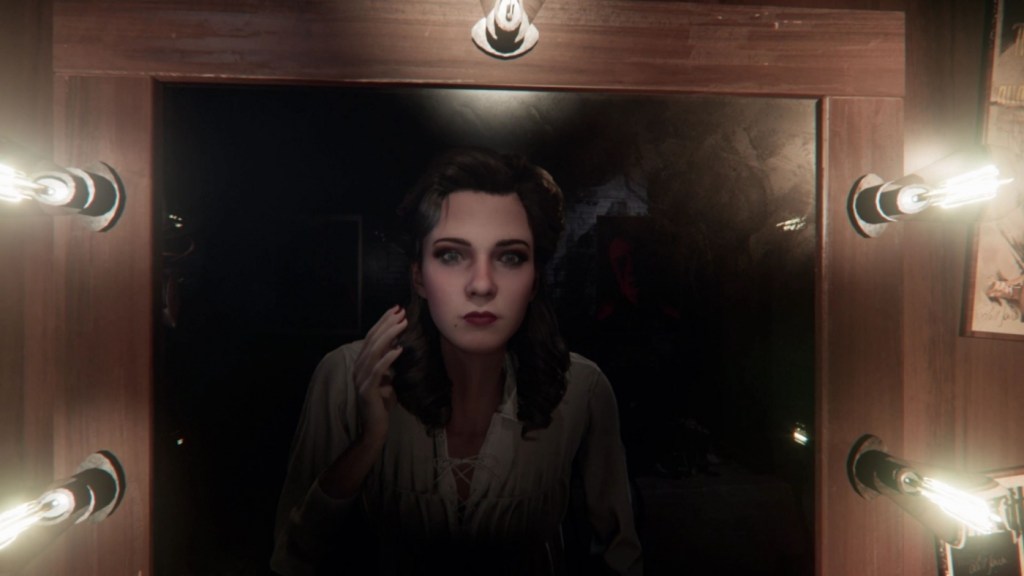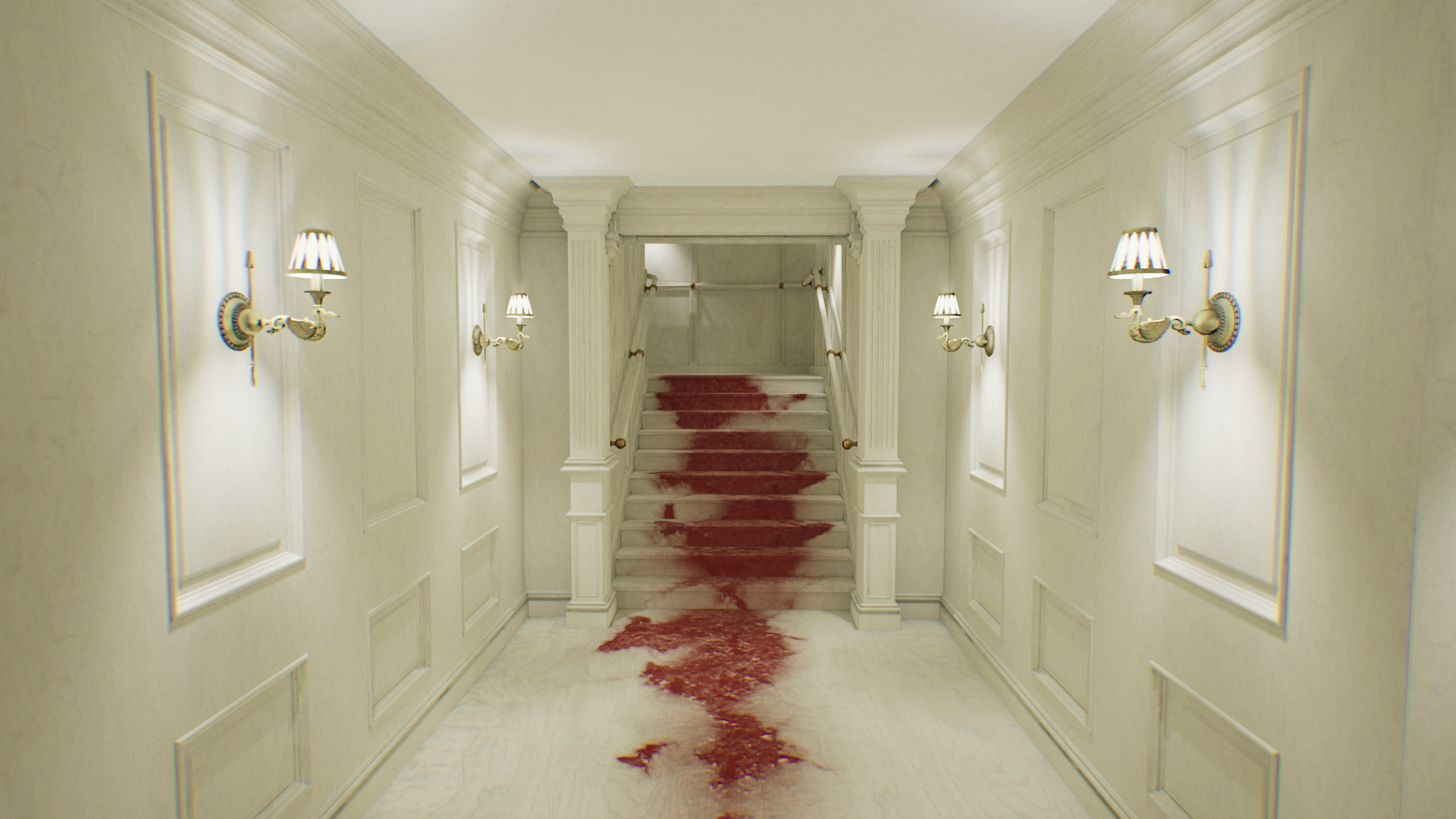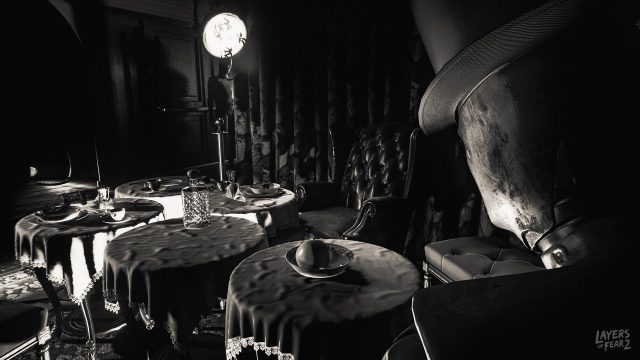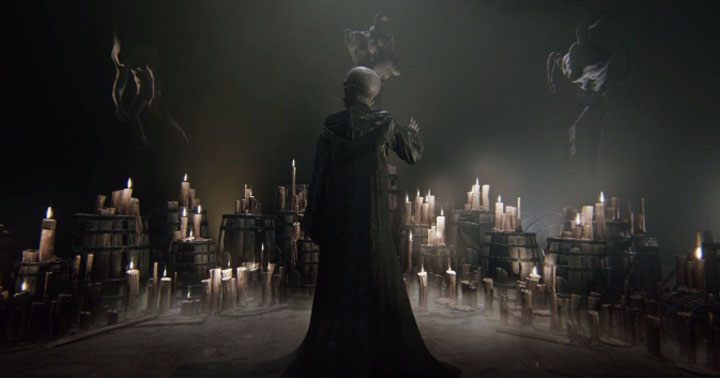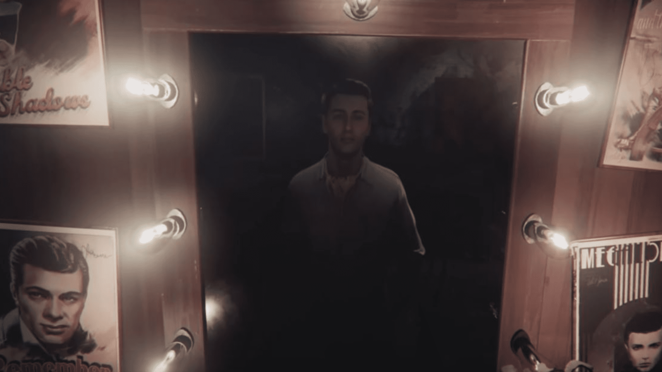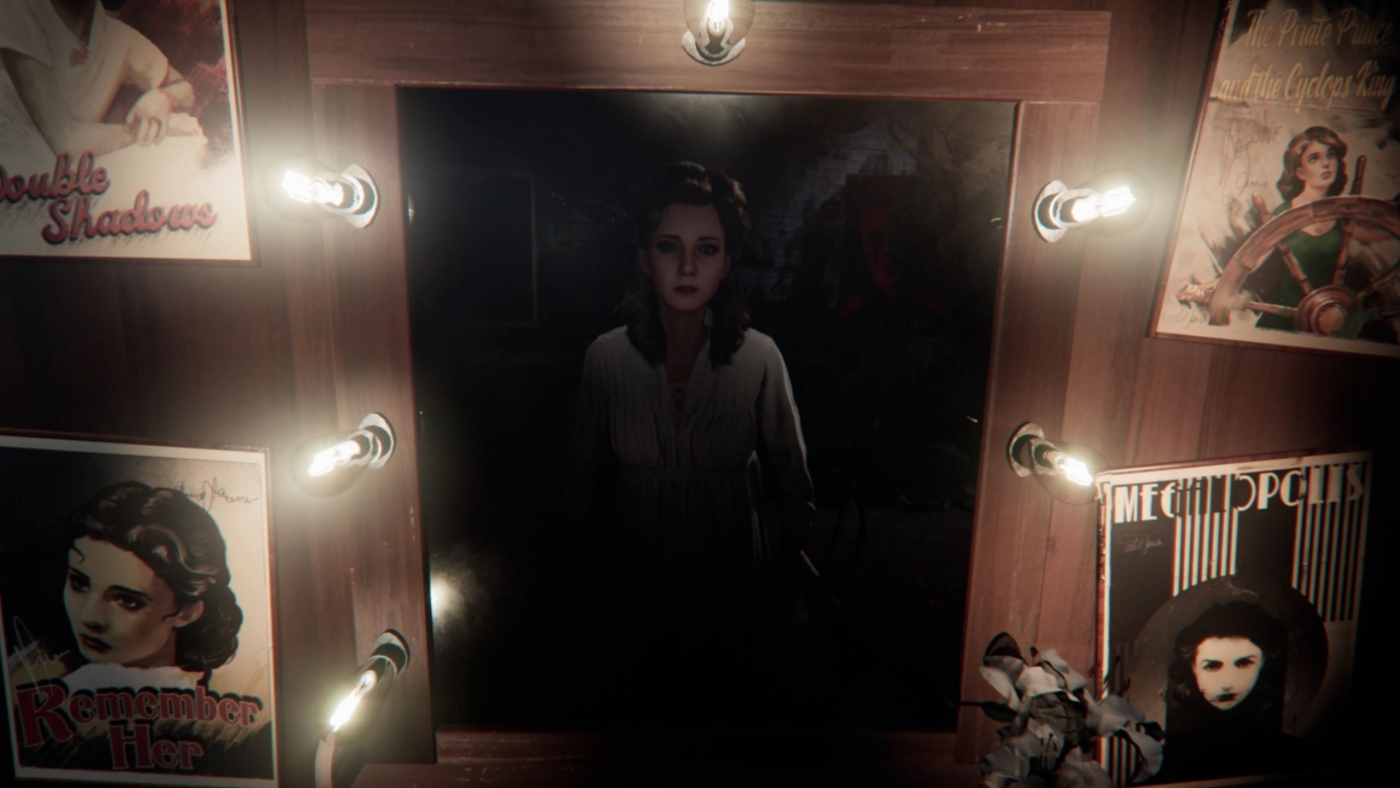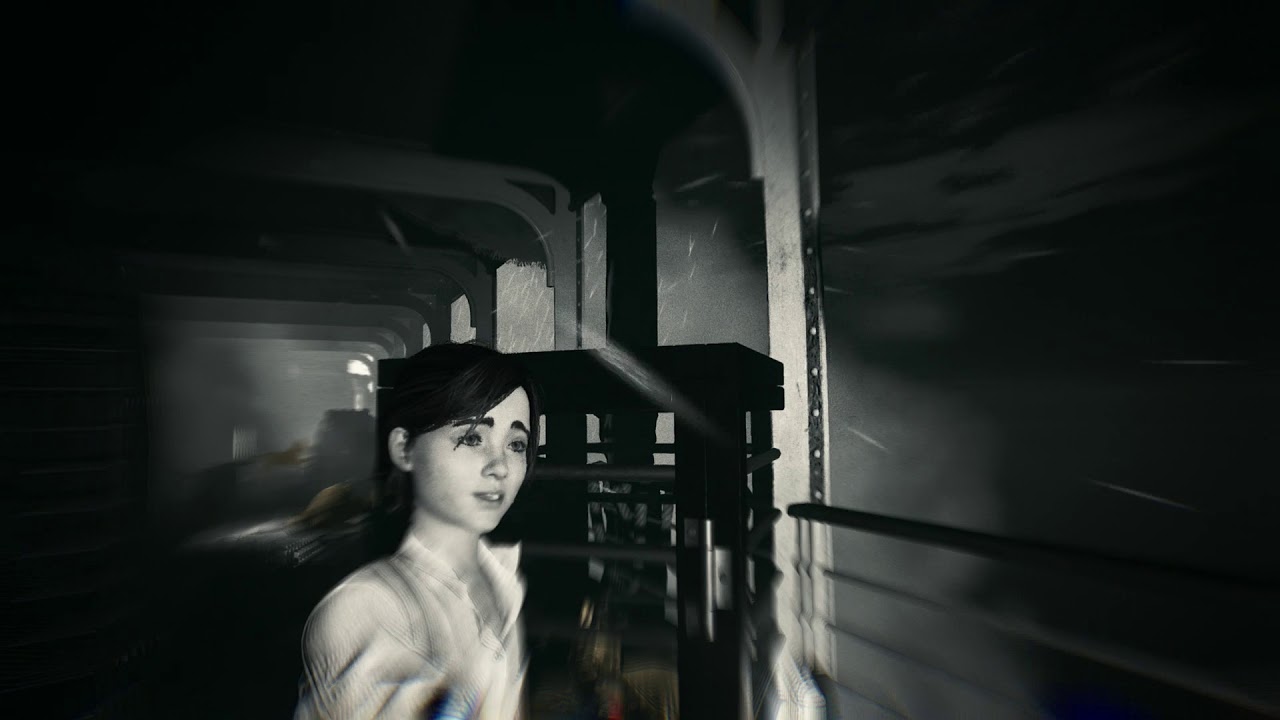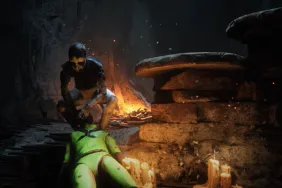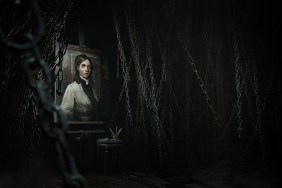I liked Layers of Fear 2 well enough when I first played it. It had some overly video gamey and mechanical parts that I wasn’t a fan of, and initially I criticized a very loose and difficult to follow narrative, but I enjoyed the atmosphere and environment that Bloober Team had created, along with the myriad movie references scattered throughout. Being a PlayStation Trophy hunter, I decided that I’d be going for Platinum, even though I knew it would require two more playthroughs. I’m incredibly glad I did, because it was when I got that third and final ending that all of the narrative pieces finally clicked into place for me.
SPOILER WARNING – Spoilers follow for Layers of Fear 2 and its three different endings
There’s an important narrative theme in Layers of Fear 2, and it’s layered quite deep, only to be found by the most dedicated of players, and even then, some people may end up missing what it’s about. At first glance, Layers of Fear 2 seems to be about an actor, James, dealing with demons of his past, including an abusive father and the death of his sister Lily. There’s a lot of ambiguity though, and it wasn’t until I finished my third playthrough that the pieces fell into place for me: Layers of Fear 2 is about the mental struggles of someone who is transgender, fighting with not only the outside world’s perception of them, but their own internal identity.
Lily and James are not brother and sister, but two sides of the same person. The Director acts as society and the pressure of “normalcy” that gets placed on LGBTQ+ people, puppeteering the Actor into staying as James rather than becoming Lily. In each of the first four acts, there is a major decision to make, either following the Director’s instruction or going against that voice.
One Character Lives, One Character Dies
It’s pretty plainly laid out in act one’s decision, but the understanding of how this piece fit into everything didn’t fall into place for me until I finished my third playthrough. In act one, there’s a point where the Director says that one character must live and one must die. “Choose the right one,” he says as the game hands you a gun. Two mannequins are in front of you, the one on the left a male dressed in a top hat and the one on the right a female. There’s no subtlety here. The Director doesn’t want you to choose the “correct” one, he wants you to shoot the “right” one, meaning kill the female.
In retrospect, this decision is the first of many that indicates the war going on both in the Actor’s own mind and against the Director. The Director, or society, wants James to suppress and kill their female side. There’s a difficulty of going against the Director that plays into the gameplay mechanics as well. If you choose to shoot the male first, you’re basically told “that’s wrong” and to choose again. At this point, many players would simply turn and shoot the other one, killing the woman. Only those who persist in putting a bullet into the male are able to make that hard choice. Standing up to the Director is always made to be more difficult that simply going with the flow of his instruction. It’s not a simple binary choice. Layers of Fear 2 is always putting pressure on you to do things a certain way, and fighting back against that is an uphill battle. That’s by design to help more effectively communicate the themes.
Another big choice presented is whether to fight for what’s necessary to survive or to just give up. Once again, it’s far easier to just give up. The gameplay prompts to fight for survival are more difficult to follow, and the game tries to make you feel bad for taking food from a dog. If you do give up here, voice over from Lily laments that you didn’t take what you needed to survive, that you just laid down and gave up. If you do take the food from the dog, the Director angrily comments on this, mad that you are fighting back. These choices mirror the struggles of transgendered individuals fighting every day for their survival.
In the third act, the trophies ask you to “follow her direction” or “follow his direction.” The decision here is less about the Director and more related to the internal conflict between the Actor’s male and female identities. Choosing to follow her direction is the one that rebels against the Director for the sake of the endings, and choosing to follow his direction is seen as going along with the Director. Given that the third act is all about the Actor’s childhood life, it makes sense that this one focuses a lot more on personal and familial conflicts rather than overtones of broader societal expectations. “Following her direction” is literally choosing the female side, which leads to that particular ending.
We’re also introduced to the father in the third act, a one-eyed cyclops of a beast that the game insinuates abused James as a child. The father only having one eye struck me as symbolism for the myopic and single-sighted way in which he viewed his son, unwilling to accept the female identity of his child.
The final choice is a flooded hallway, a rising tide pushing you backwards. The Director wants you to just go with the flow and move backwards with the direction of the water. To rebel against him, you must push forward as the game keeps trying to push you back. Another decision where it’s easier to do what the Director wants than to go against his wishes. The decisions are pretty poignant, but it’s really the endings that provide the perspective needed to put this puzzle together.
The Three Endings – Gender Identity
Ending One – Formless
More than the decisions themselves, it’s the three separate endings that really put everything into context and finally unveil the mystery and message that Layers of Fear 2 holds. The first ending I got was one where I both obeyed and went against the Director in multiple decisions. As a Trophy, this ending is called “Formless,” with a description of “succumbing to madness.” This ending depicts a mind that was at war with itself and was not able to choose a side. “You don’t even know what you are,” a creepy ratwoman tells you. “A creature trapped in a prison of its own making.”
The “Formless Man” is the physical antagonist that appears multiple times throughout the game, the struggle of the Actor’s gender identity made manifest as a being that has no form. With the formless ending, the Actor becomes their manifest fear. They have no identity as they struggle with who they feel they are inside and who the Director wants them to be. This ending is implied to be the “bad” ending, full of ongoing conflict. The trophy image simply says “Not to be,” which has no sense of finality at all.
Ending Two – Follow the Director
For the second ending, I played through the game and followed the Director’s direction. I shot the female mannequin. I gave up on my own survival. I went with the flow of the tide. I ended up in a room with child James. The actor looks down at his hands, clearly male hands. James gives an eerie rhyme, talking about the past being dead and gone. Adult James begins reciting it with him. “When all we love is stripped away, a boy must leave, a man must stay.” Child James is at a table eating a clay figure, the formless husk of the Actor’s identity. Adult James embraces the child James, his male identity, and the room is revealed to be a stage, the audience clapping for their performance as the screen fades to black.
When it comes back up, James is looking in a mirror in a dressing room at himself. James had followed the Director, or society’s expectations. He touches his face as he examines himself, but his eyes look empty and he never smiles. He glances at the movie posters that adorn the wall around the mirror, all of them featuring James as the lead character. He’s successful, but he’s an empty shell without Lily. Only one of them could survive. James has an identity, but it’s not who they really want to be. Ending two’s trophy image is a boring image that simply says “End.” While James may no longer be at conflict after following what they were told to do, they are no longer who they really want to be either.
Ending Three – Forever
The third and final ending was where everything finally clicked into place with me, where every choice and bit of symbolism made sense. On my third playthrough, I went against everything the Director wanted me to do. I shot the man. I fought for my own survival. I swam against the rising tide, pushing back against the flow of water that was dragging me the other way.
In this ending, the Actor enters a room just as child James shoots a gun. They recoil, and their hands are shown to be a woman’s. Once again, child James is reciting a rhyme about the past as he repeatedly shoots at the clay figure he was eating in ending two. Adult Lily begins reciting the rhymes with him. “For there are things that should not be, and there are wounds that time won’t heal.” James fires his gun once more at the clay figure and recoils as if he himself had been shot.
“The flame that burns the lies away. The truth revealed, let come what may,” Lily recites as James puts the gun to his head and pulls the trigger. He falls to the ground dead and the clay figure shatters. Both James and Lily cannot live. In one ending, the Actor accepts childhood James. In the other, James kills himself so that the Lily identity can be free to exist. The stage lights come on, and scattered applause once again reveals this to be the final part of a performance, just as in ending two. The screen fades to black.
When we come back, we see a woman’s face looking into a mirror in a dressing room. Lily touches her cheek and examines herself, once again solidifying those themes of identity. Who is the person looking back? She looks at the movie posters on the wall around the mirror, now with only her as the lead character in each image. In each ending, there can only be either James or Lily, but not both. If you try to embrace both, you get the formless ending, the one where the ratwoman accuses the Actor of not even knowing who they are.
“Forever” is the good ending, with a beautifully handscripted “Fin” as the trophy image. Lily is finally who she wants to be, resolving her internal conflict and embracing her identity as a female. It’s also the most difficult ending to get, particularly without a guide, as the game constantly tries to direct you away from this path. This a direct parallel to the difficulty that transgender people have in fighting against “The Director” and being able to openly embrace their true gender identity.
In both the James and Lily endings, they look to a trunk in the mirror, which had been part of their childhood. It rattles for a moment and opens suddenly as scary sound plays and cuts to credits. The trunk is representative of the character’s past, and while they may have chosen an identity, it’s a reminder that the past is always going to be there, a horror lurking in the background.
Lily and James, Two as One
Throughout the game, Lily and James seem to be best friends and siblings, but also seem to be at war with one another, particularly in later acts. Lily is often mad at James, which can be interpreted as her being upset that James is suppressing his female identity. At times, James is left alone without Lily. Realizing that she’s a core part of his identity, it breaks him and leaves him hollow to not have her there. It’s always implied that James needs Lily, not the other way around. When James is without Lily in any way, he feels empty, because Lily is his true identity that’s being suppressed.
Furthermore, when child Lily “dies” near the end on the burning ship, it suggests that while the impressionable young James had dual gender identities when he was young, societal expectations and abusive parenting forced him to accept being a male at some point in his early adolescence. Layers of Fear 2 and the decisions made within tell the story of the Actor. The three endings explore the possibilities of if the Actor remained an empty shell as James giving in to the direction of society, succumbed to madness as the war raged between expectations and their identity, or if Lily finally emerged despite all of the hardships and horrors that the Actor was forced to endure.
Choosing to have the game about an actor wasn’t just a random choice. Because actors take on many identities, it helps to deliver the themes of gender identity and one discovering who they truly are. There are parallels between the internal conflicts and the outside direction given. If an actor is simply taking direction from a Director, that doesn’t make that character who they truly are. They are simply playing a part. The horror that’s waged against the player in Layers of Fear 2 can’t even begin to scratch the surface of the conflict that transgender people go through, both internally and externally, but it really hit me in a meaningful way once I was able to see the full picture. Layers of Fear 2 is all about identity. It’s all about conflict with your own identity and being an actor for the world; playing a part versus being able to be who you truly are.
There are plenty of other references throughout the game that relate to the themes of identity and further cement Layers of Fear 2’s transgender identity narrative as Lily fights for who she really is. At the very beginning of the game, the wardrobe area has all female clothes, foreshadowing the reveal in the true ending that the identity of the Actor is Lily. The mannequins are all blank canvases, without identity or souls. Many of the films referenced throughout the movie also play on themes of identity. Just look at the Fight Club Easter egg, which has a Trophy attached to it. In Fight Club, a man lives with dual identities that manifest as two separate people throughout the film (spoilers, sorry).
Instead of laying these themes out on the surface, Layers of Fear 2 layers them in a way that understanding comes after a lot of investment into the experience. Most players who only do a single playthrough may never understand the deeper narrative, just as my own review cited a confusing and ambiguous narrative structure after only one playthrough. Understanding comes once you’ve been walking with the Actor, enduring their terror, and having to confront the Director, the cyclops father, and their own mind. The journey isn’t an easy one, but it’s one that will stick with me for quite a while now that I understand how all the pieces fit together. For me, Layers of Fear 2 was just a small window into the struggles and horrors that the LGBTQ+ community goes through with identity.
